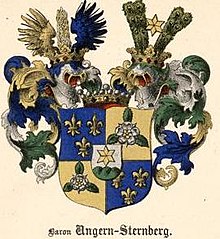Life in the Courland During an
Independent Duchy
What is the Himelhoch history? How did the family
come to Michigan, and then ultimately be part of the department store sensation
that defined high fashion in the Motor City?
In the late 1870s, bothers Wolf, Isaac and Meyer
Himelhoch left a town called Sasmaken, relatively
close to the major Baltic port of Riga in a then-province called Courland,
which along with the adjacent provinces of Livonia and Latgale, in 1917, was
consolidated into a country called Latvia, a total space slightly larger than
West Virginia.
� 
Map of the
Courland (from Curland Research Group)
Unfortunately for its inhabitants, these three
provinces had been long-term components of the Russian Empire - in the case of
Courland, since 1795. They had been originally settled by tribesmen, who were
conquered in the 13th century by Germanic Teutonic knights, whose
family and vassal decedents continued in the Courland throughout the centuries
as the huge land owner aristocratic barons, remaining the dominant economic
force unimpaired by political fallout.
During a short Swedish annexation, authority and
administration was pretty much limited to Livonia. Later, a Polish conquest
involved the close cooperation of the Germanic nobles whose dominant role even
increased. Courland became an independent Duchy under the protection of Poland,
but a key section, only a few miles from Sasmaken, Pilten, through a
complicated separate agreement, was placed directly under the rule of the king
of Poland. Because of the Bishop of Piltan, who was given complete autonomy,
and himself, the largest land owner, the Jews were not subjected to the same
adverse restrictions as existed in the Duchy.

In the interest of his own extensive land holdings
and his Germanic background, he was anxious to enhance trade relations with
East Prussia, utilizing the port of Ventspils better known as Windau. He
encouraged immigration of East Prussian Jews to stimulate the economic growth
of the entire area and extended Jews’
rights of domicile. These East Prussian Jews constituted significant
immigration, even though it was much smaller than Lithuanian and Russian
immigrations that followed considerably later.
The Russian rule of Courland began in 1795, but,
as previously stated, the wealthy German land owner power remained. A strange
interdependence with the Jews evolved, and the barons’ lifestyles became a targeting factor
in Jewish assimilation, including adoption of status sounding German names like
Himelhoch.
There is strong evidence that the three Himelhoch
brothers were at least the third generation of Sasmaken Jews. Based on graves
and death certificates, it appears S.W., their father, was born in Sasmaken in
1808, and his father, N., was also born there. This would likely place N’s birth back to sometime in the 18th
century, probably before the Russian rule, which started in 1795, when there
were fewer than 5,000 Jews in all the Courland.
It could be that the Himelhochs represent an
extension of the original immigration from East Prussia. This might explain the
name, which admittedly might have come later.
East Prussia seems more logical than the
Lithuanian and Russian immigrations, which in the main did not occur until late
in the 19th century when the Himelhochs had already departed for
America.
Next page -> The Himelhochs Among the
Jews of Pilten
Social Share:
All website content © 2018 Himelhoch’s LLC..